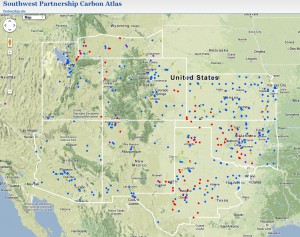Southwest Partnership Projects
The Southwest Partnership’s effort has focused on three Phases, all based upon the mandate of the National Energy Technology Laboratory. As one of seven regional carbon partnerships, it has been tasked to determine the best geologic and terrestrial carbon management approaches that may help to store or better utilize captured CO2 in a commercial scale.
The Southwest Region
The Southwest Region of the United States is energy-rich, with some of the largest energy-production growth rates in the nation. Two major pipeline networks transport more than 32 million metric tons (35 million tons) per year of natural subsurface CO2 to petroleum fields throughout the southwest and mountain states, where it is used for enhanced oil recovery (EOR). Naturally occurring CO2 is found in reservoirs in many western states, including New Mexico, Colorado, and Arizona. In addition to natural sources, the 10 largest coal-fired power plants in the region produce about 125 million metric tons (138 million tons) per year. Other stationary sources include natural gas processing plants, refineries, and ammonia/fertilizer, ethylene and ethanol, and cement plants. A number of these sources are being used for EOR in Texas, Colorado, and Wyoming and account for about 20% of the injected CO2 in the SWP.

